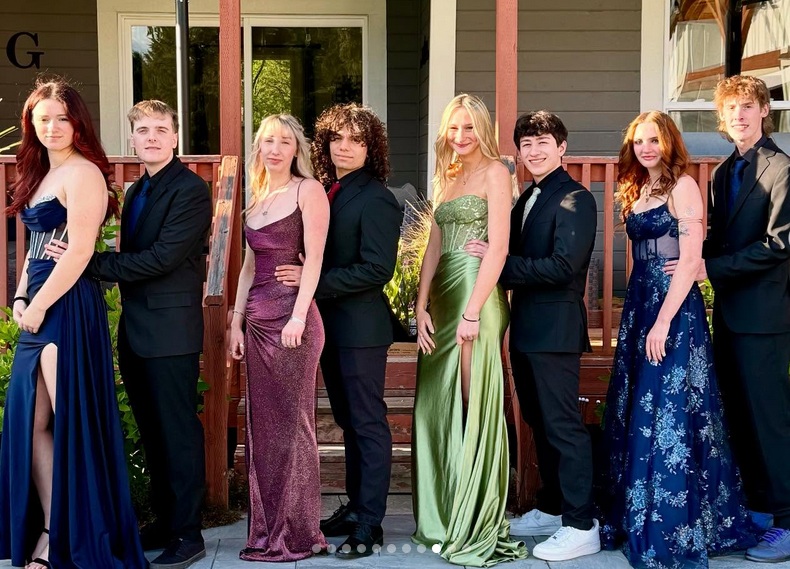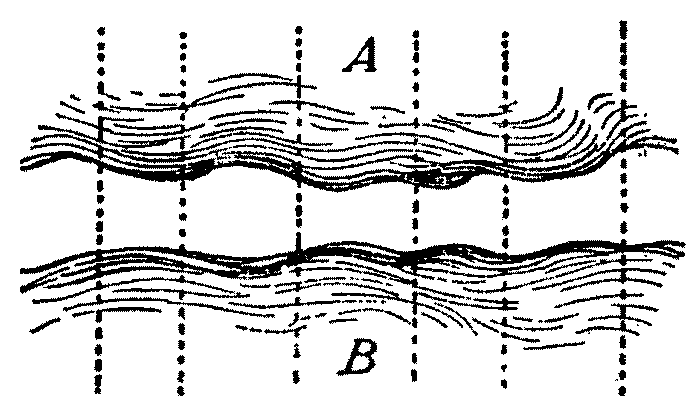The earliest anthropologists were certain that they could use their methods and theories to understand “America.” Some (M. Mead, L. Warner) did, directly, and then soon many more have been certain that they could contribute to some understanding of the United States (its problems, futures, etc.). In this century-old and ongoing conversation some things have remain surprisingly stable. Over the generations ethnographers have reported observing, or hearing, very similar things. Not surprisingly, they have greatly differed in their interpretation of what they observed. I muse today about the implications of the tension between the perennity of observations and the shifting of the interpretations. Where might anthropologists go from here?
Take, as one instance of ethnographic stability, students in the high schools America builds for them (Varenne & McDermott 1998). For at least a century, about any observer (including “participant” ones) have noticed how, under the distant control of their teachers, the students organize how they sit in their cafetaria, how they walk in the corridors, how they recruit other students into their activities—or cancel these other students. They do this in complex ways and with complex, sometimes dramatic if not tragic (or comic), consequences that are remain a perennial theme in the American imagination, in novels, films, etc. And they can also produce extensive critiques of all this.
As early as 1929, the Lynds reported that “one of the keenest and most popular girl in the school” told them about eligibility for a “leading high school club”:
The chief thing is if the boys like and you can them for the dances… Then, if your mother belongs to a graduate chapter that’s pretty sure to get you in. Good looks and clothes don’t necessarily get you in, and being good in your studies doesn’t necessarily keep you out unless you’re a ‘grind.’ Same way for the boys—the big thing there is being good on the basket-ball or football team. A fellow who’s just a good student rates pretty low. Being good-looking, a good dancer, and your family owning a car all help. ([1930] 1956: 216)
Since then, about all anthropologists of American high schools have collected very similar accounts. They have also reported that such accounts by student participants correspond closely to what they observed. Warner’s work in Jonesville (1949), or Hollingshead in Elmtown (1949), suggest that not even the Great Drepression or WWII had made a difference. One thing that Warner and Hollingshead did notice that is not included in the Lynds’ report is the ambivalence, if not critique, of the students’ structuring their interaction. As one girl told Warner:
There are a group of girls there who think they’re higher than us [Florence, Carol and I]. They’re a group of girls from the wealthier families. They look down on us. They have a club that’s supposed to be outside the school, but it’s really in the school. They can do things we can’t afford, and they just go from one club to another and hog all the offices, and are in all the activities. (1949: 91)
 Note the we(named friends)/they(anonymous members of a club) dichotomy. Note also the telling of a psychological price about which Jules Henry made much (1963). A generation later, as the “liberations” of the 1960s hit suburban New Jersey, I also could not miss the “cliques” even in a town that appeared to many as quite homogeneous in terms of class (Varenne 1982).
Note the we(named friends)/they(anonymous members of a club) dichotomy. Note also the telling of a psychological price about which Jules Henry made much (1963). A generation later, as the “liberations” of the 1960s hit suburban New Jersey, I also could not miss the “cliques” even in a town that appeared to many as quite homogeneous in terms of class (Varenne 1982).
There is no evidence that one would not observe similar organizing in the high schools of early 21st century America.  There are probably shifts in vocabulary, or the symbols around which the students organize. From 1960 to 2025: Differences: women’s hair (up vs. down), men’s jackets (colorful vs. black); Similarities: sex pairing and heavy gendering of (extra-ordinary) clothes.
There are probably shifts in vocabulary, or the symbols around which the students organize. From 1960 to 2025: Differences: women’s hair (up vs. down), men’s jackets (colorful vs. black); Similarities: sex pairing and heavy gendering of (extra-ordinary) clothes.
There is no evidence either (or rather perhaps the reverse) that one would not also continue to observe various forms of discursive critiques of this organization—including performative ones. After all, about everyone, participants as well as observers, would agree, classes/cliques are not what “American is all about” and one may wish to distance oneself from those who are somehow wrong.
I was reminded of all this when, for various contingent reasons, I looked again, after a very long time, at Francis Hsu’s work on what he did not question labeling “America.” To this date, Hsu remains the only president of AAA with a Chinese last name. He was born in Manchuria in 1909. He was schooled in China, experienced serious difficulties in the wars and invasions of the 1920s and 1930s in China. Eventually, in 1937, he was accepted as a doctoral student at the London School of Economics, worked with Malinowski, received his PhD in 1941. He briefly returned to China and soon left. By 1944 he had started an academic career in the United States, culminating with his three decades at Northwestern University.
I will leave aside wondering whether Hsu was a “Chinese” or “American” anthropologist, or whether his early enculturation (habitus?) made him a more sensitive observer of America. He did write extensively comparing and contrasting “the Americans” against “the Chinese” (1963, 1972, 1981). Phrasing his observations and interpretations that way may be the reason so many dismissed his work and it has been all but forgotten—or at least dropped from the canon of work on the United States. My reasons for not making him part of my personal canon had more to do with his overly grounding his work in the kind of late Boasian psychological anthropological then deprecated at the University of Chicago. That is, in bad graduate student fashion, I focused on Hsu’s interpretation of his observations, rather than on the ethnography on which he relied.
Today, I take Hsu seriously. I focus on his contribution the still ongoing debate about the place of “class” in America, and particularly on what anthropologists can contribute to the debate. I start with a few sentence by Hsu criticizing Lloyd Warner. Hsu starts with a summary of Warner’s observations:
He finds the Jonesville grade school children’s evaluation of one another to be so strongly reflective of social-class values as to blind them to the actual reality. For example, children from the top classes were rated 22 times cleaner than those from the bottom, but in fact, the latter as a whole came to school cleaner and neater than the former. However, he also finds that the Jonesville high school students, though following a similar pattern, do not make such categorical and rigid judgments by class values. (1972: 247)
And then he quotes Warner’s interpretation of something Warner also observed, that high school students are “less open and more careful about what they say and how they feel on the tabooed subject of status.” Warner interpreted this as the students having “learned to use American values of individualism and are able to make clearer distinction about the worth of an individual than are younger children.” (1953: 1982-183). Hsu objected that this was a common error among American social scientists “due to the fact that many … American scholars have been too emotionally immersed in the absolute goodness of their own form of society, ethic, thought, and religion that it is hard for them to question them… They cannot see anything but the eventual triumph of their cultural ideals … over realities such as racism and religious intolerance” (1972: 245).
Complaining about the more or less unconscious biases of other social scientists is, of course, a staple of anthropological debates. What interests me here is that Hsu criticizes Warner’s interpretation, but not necessarily his observations. In my own work, I certainly observed extensive performances of what the students talked about as “cliques.” There were the sitting patterns in the cafetaria, the clothing and other bodily displays (e.g. hair styles) in the corridors and classrooms, the sorting and segregating of para-educational activities (sports, cheer leading, pushing video carts). I talked extensively with both teachers and students about all this, and they were more than willing to answer at great length to explain and teach. I also noted the greater ease that the younger students had in talking about cliques as things. In contrast the older students said things like “last year cliques were bad, but not so much this year,” “some people think of us [football players] as a clique but we are really only a loose group of friends.” It would seem that the seniors had indeed “learned” how to talk to observing adults asking questions about the obvious and needing, perhaps, to be corrected about what they suspected would my interpretations. Not only had the seniors learned about the “taboo” (in Warner’s words) on class talk, but also how observing social scientists might blame them for not observing it.
Like Warner, I emphasized this evolution and was later critiqued on grounds similar to Hsu’s: I would have de-emphasized the “reality” of the cliques (Lesko 1988: 74). Whether I (or Warner) did by bringing out the anti-class/cliques discourses a matter of interpretation about the nature (ontology?) of such things as “classes” (and the other matters social scientists deplore like racism, genderism, etc.). What should not be a matter of dispute is the (total social) fact that anthropologists observe both class (race, gender) segmentation and the discourses critiquing those, and that one can observe all this not only among the professional observers but also among the participants, whether high school students, politicians, or artists. Whether anthropologists should then report this as an “American Dilemma” (Myrdal ) or a conflict between “Dream and Reality” (Warner 1953; and passim in the literature), or, as I would suggest, constitutive of each other (as I would say), should now be a matter of dispute.
[more on all this in a future post]
References
Henry, Jules 1963 Culture against man. New York: Random House.
Hollingshead, B. 1949 Elmtown’s Youth: The Impact of Social Class on Adolescents. New York: John Wiley and Sons.
Hsu, Francis 1972 “American core value and national character,” in Psychological anthropology. Edited by F. Hsu. Cambridge, MA: Schenkman Publishing Company. pp. 201-240.
Lesko, Nancy 1988 Symbolizing society: Stories, rites and structure in a Catholic high school. New York: The Falmer Press.
Lynd, Robert and Helen Lynd [1930] 1956 Middletown: A study in modern American culture. New York: Harcourt, Brace and World.
Myrdal, Gunnar 1944 An American dilemma: The Negro problem and modern democracy. New York: Harper and Row.
Varenne, Hervé 1983 American school language: Culturally patterned conflicts in a suburban high school. New York: Irvington Publishers
Varenne, Hervé and Ray McDermott 1998 Successful failure: The school America builds.” Boulder, CO: Westview Press.
Warner, W. Lloyd 1949 Democracy in Jonesville. New York: Harper and Row.
1953 American life: Dream and reality. Chicago: University of Chicago Press
 Print This Post
Print This Post
 Print This Post
Print This Post
 Note the we(named friends)/they(anonymous members of a club) dichotomy. Note also the telling of a psychological price about which Jules Henry made much (1963). A generation later, as the “liberations” of the 1960s hit suburban New Jersey, I also could not miss the “cliques” even in a town that appeared to many as quite homogeneous in terms of class (Varenne 1982).
Note the we(named friends)/they(anonymous members of a club) dichotomy. Note also the telling of a psychological price about which Jules Henry made much (1963). A generation later, as the “liberations” of the 1960s hit suburban New Jersey, I also could not miss the “cliques” even in a town that appeared to many as quite homogeneous in terms of class (Varenne 1982). There are probably shifts in vocabulary, or the symbols around which the students organize.
There are probably shifts in vocabulary, or the symbols around which the students organize. 
 There, the wavy lines are an attempt to capture the mystery that language imperfectly reveals as it works at representing this mystery using the vagaries of human affordances (vocal box, faces and arms, etc. Not to mention a peculiar brain). If any of this was “designed” it was not by an efficiency expert. As Merleau-Ponty once said, and I paraphrase and expand, “meaning is in the silence between the words” ([1969] 1973: 43). Mystery is not empty. Stuff (good and bad) happens. Or, as another wise man put it:
There, the wavy lines are an attempt to capture the mystery that language imperfectly reveals as it works at representing this mystery using the vagaries of human affordances (vocal box, faces and arms, etc. Not to mention a peculiar brain). If any of this was “designed” it was not by an efficiency expert. As Merleau-Ponty once said, and I paraphrase and expand, “meaning is in the silence between the words” ([1969] 1973: 43). Mystery is not empty. Stuff (good and bad) happens. Or, as another wise man put it: